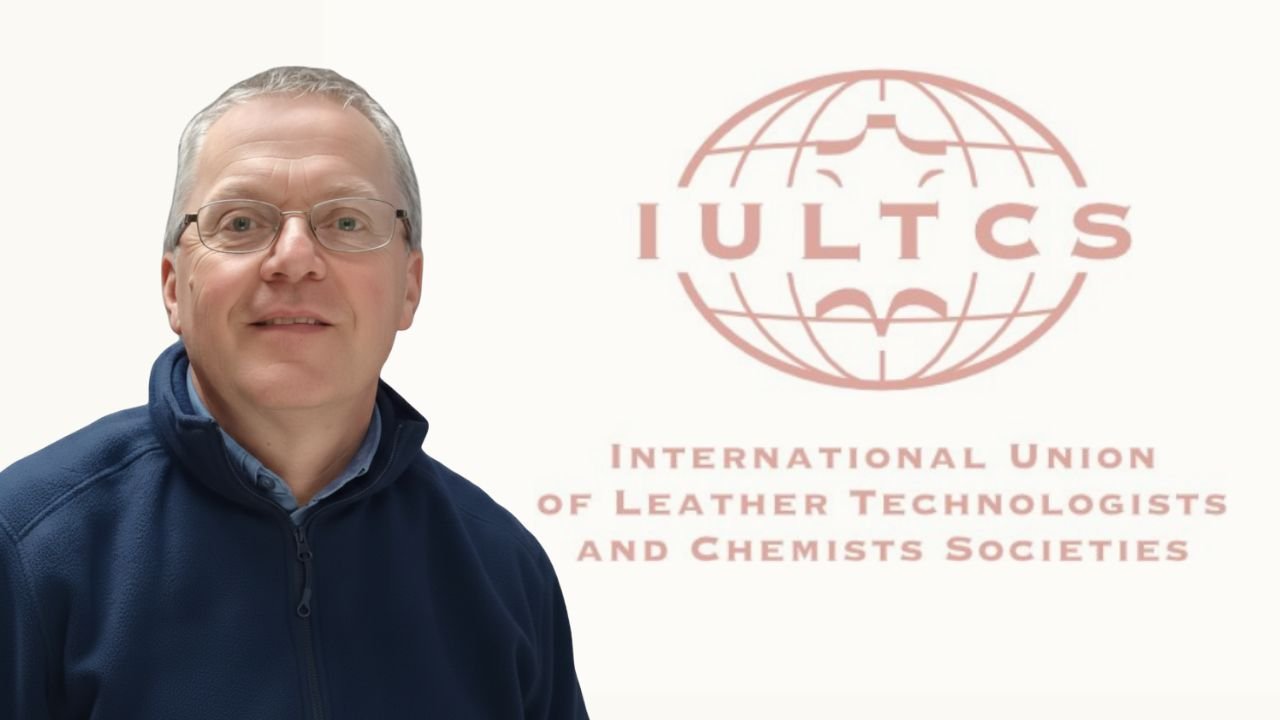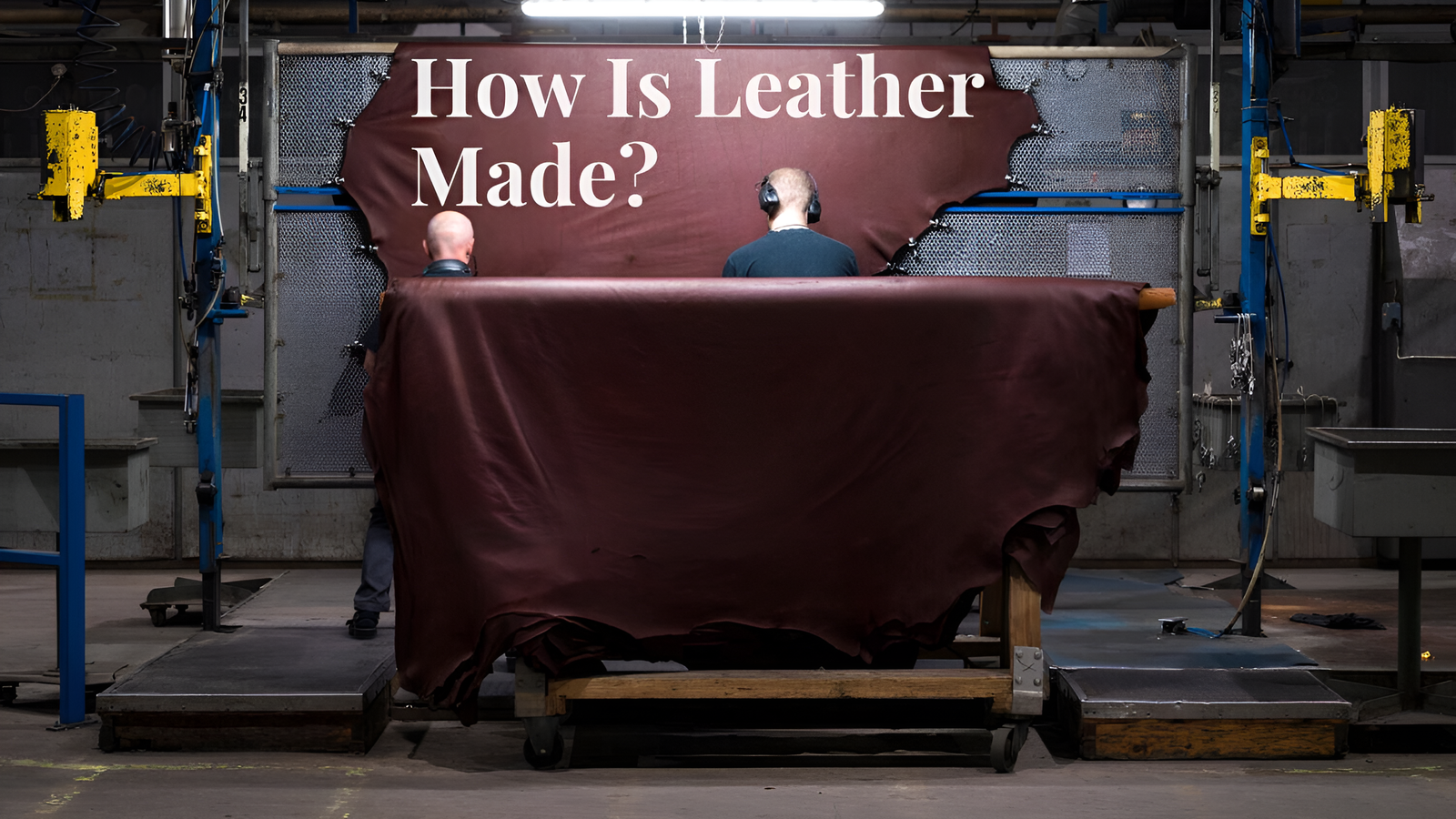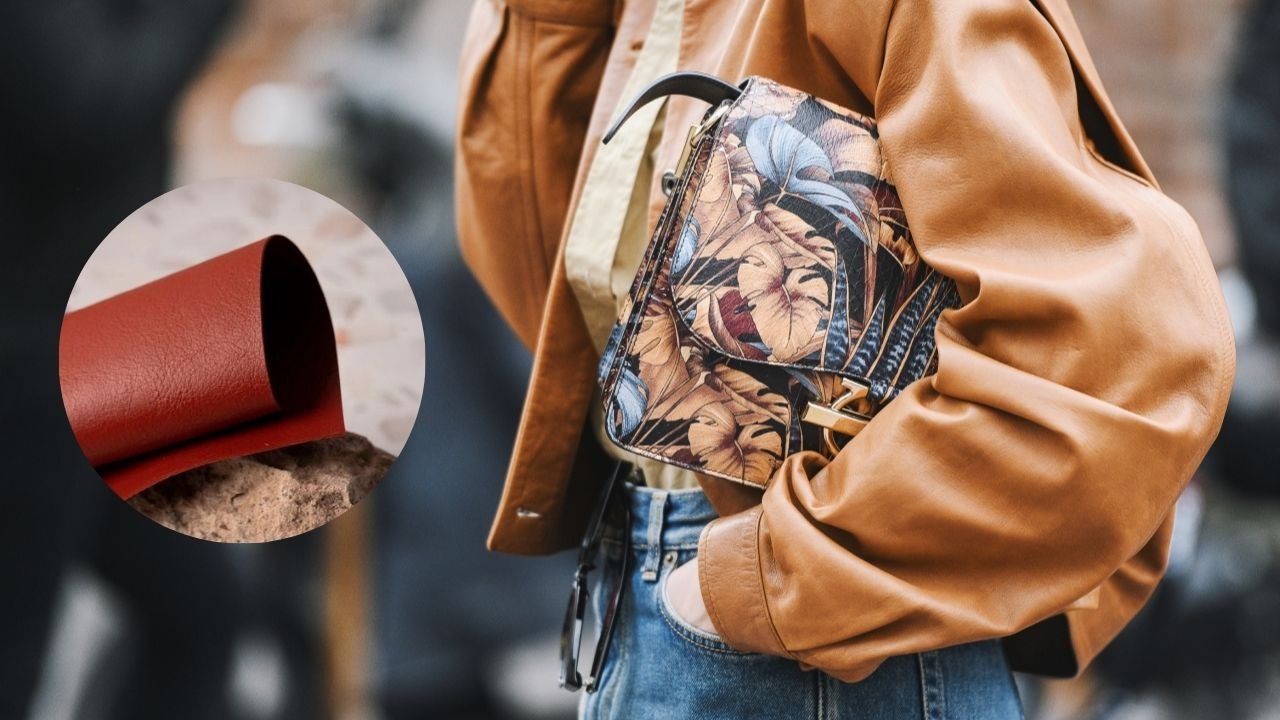In recent years, the debate between vegan leather vs real leather has intensified as consumers become more conscious of the environmental and ethical implications of their purchasing decisions. As the demand for sustainable and cruelty-free alternatives grows, it’s essential to understand the differences between these two materials and their respective advantages and disadvantages. In this comprehensive comparison, we’ll explore the composition, manufacturing processes, market trends, future prospects and final opinion on this debate.
What is Vegan Leather?
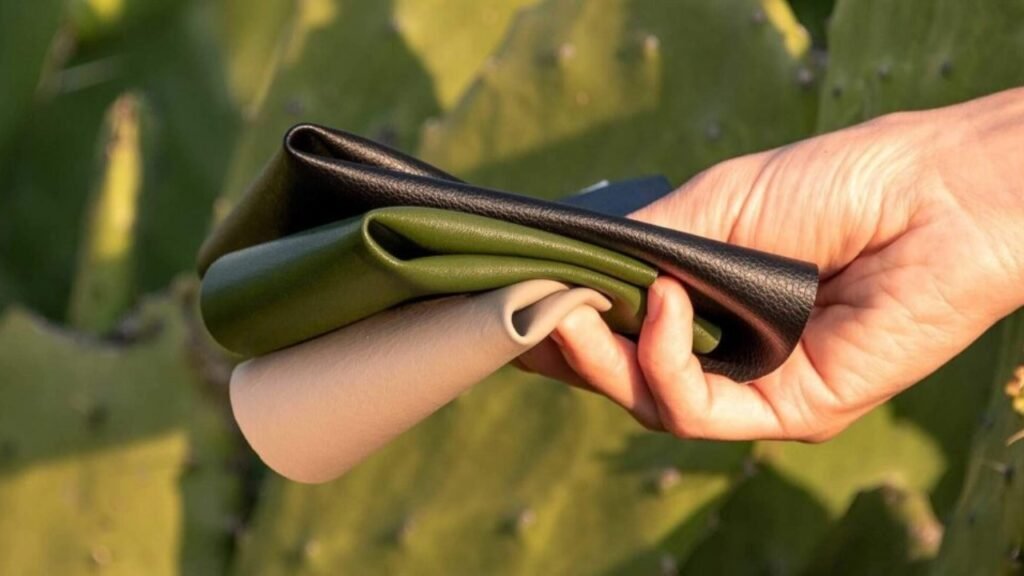
Definition and Composition
Vegan leather, also known as faux leather or pleather, is a synthetic material designed to mimic the appearance and texture of real leather. It is typically made from polyurethane (PU) or polyvinyl chloride (PVC), combined with various other materials such as cotton, linen, or recycled plastic.
Types of Vegan Leather
There are several types of vegan leather, each with its own unique characteristics:
- PU-based leather: Made from polyurethane, it is the most common type of vegan leather.
- PVC-based leather: Made from polyvinyl chloride, it is less expensive but less breathable than PU leather and is known for its water-resistant properties.
- Microfiber-based leather: Made from synthetic microfibers, it is soft, durable, and easy to clean.
- Cork & Piñatex-based leather: These are basically natural fibers Made from the bark of cork oak trees & pineapple leaves & mushroom leather made from mycelium
How Vegan Leather is made
The manufacturing process of vegan leather varies depending on the materials used. However, it typically involves the following steps:
- Material selection: The chosen materials, whether synthetic or natural fibers, are selected and prepared for processing.
- Processing: The materials undergo various chemical treatments and heavy processes to achieve the desired texture, appearance, and durability of leather.
- Bonding: In the case of synthetic vegan leather, the materials are bonded together using adhesives or heat to create a cohesive material.
- Finishing: The finished material is treated with coatings, dyes, and embossed with a leather-like texture. on the surface layer to enhance its appearance and performance.
What is Real Leather?

Definition and Composition
Real leather is a natural material made from the hides and skins of animals, primarily bovine and ovine hides and skins which includes cattle, sheep, and goats. It is a durable and long-lasting material that has been used for centuries in various applications, from fashion, clothing, accessories to furniture and automotive interiors.
Types of Real Leather
There are several types of real leather, each with its own unique characteristics:
- Full-grain leather: The highest quality leather, made from the outermost layer of the hide.
- Top-grain leather: The second-highest quality leather, made from the outer layer of the hide with the imperfections removed.
- Split leather: Made from the middle layers of the hide, it is less expensive but less durable than full-grain or top-grain leather.
- Suede: Made from the underside of the hide, it is soft, velvety, and less durable than other types of leather.
You can read more about what is a bovine leather here – https://leathernews.org/what-is-bovine-leather/
How Real Leather is made
The manufacturing process of real leather involves tanning the animal hide to prevent it from decomposing. The tanning process involves mainly 4 stages such as
- Pre-tanning: Pre-tanning is the initial stage of leather production, where raw hides and skins are prepared for tanning.
- Tanning: Tanning is the process that converts the rawhides and skins into leather. There are several methods of tanning, including organic materials & inorganic tanning agents
- Post tanning: Post-tanning involves further processing to enhance the leather’s properties and appearance.
- Finishing: Finishing is the final stage of leather production, where the leather is treated to enhance its surface level properties such as its appearance.
Comparative Analysis
In this section, we’ll conduct a comparative analysis between vegan leather and real leather, evaluating their performance across various key factors.
| Characteristics | Real Leather | Vegan Leather |
| Durability | ||
| Longevity and wear over time | High | Low |
| Resistance to elements (Water, Sunlight, Chemicals, Temperature) | Medium to High | Low to Medium |
| Real leather is generally more durable due to its natural composition and the tanning process | Vegan leather still lags behind in terms of long-term durability | |
| Appearance and Texture | ||
| Visual differences | Natural grain and texture | Synthetic appearance |
| Variability in quality and finish | High | Low to Medium |
| Real leather has a unique natural appearance and texture that is difficult to replicate in vegan leather | Texture may feel less authentic compared to real leather | |
| Environmental Impact | ||
| Environmental footprint | High to Medium | Medium to Low |
| Sustainability considerations | Medium | Medium |
| Though leather is a by-product of the meat industry, the use of chemicals, results in a higher environmental impact | Vegan leather, on the other hand, is often made from synthetic materials and heavy chemicals | |
| Cost | ||
| Price comparison | High | Medium |
| Long-term value considerations | High | Low |
| Real leather is generally more expensive since it falls under the luxury category due to it high production cost | Vegan leather, while often less expensive, may not provide the same long-term value as real leather | |
Market Trends

In this section, we’ll explore the current market trends surrounding both vegan leather and real leather, shedding light on consumer preferences and industry adoption.
Consumer Preferences
- Popularity of Vegan Leather in Fashion
There has been a noticeable rise in the popularity of vegan leather in the fashion industry in recent years. Consumers are increasingly drawn to cruelty-free and sustainable alternatives, driving demand for products made from vegan leather.
- Demand for Sustainable and Ethical Products
With growing environmental awareness, particularly younger consumers are actively seeking out products that align with their values. This has led to a significant increase in demand for sustainable and ethical alternatives to traditional leather.
Industry Adoption
- Incorporation of Vegan Leather by Brands
Many fashion brands are responding to consumer demand by incorporating vegan leather into their product lines. From apparel and accessories to footwear and handbags, vegan leather options are becoming increasingly prevalent across various sectors of the industry.
- Trends in Real Leather Use and Demand
While real leather continues to maintain its status as a premium material, there has been a shift in consumer attitudes towards its use. Some brands are exploring sustainable practices and responsibly sourced leather with organizations such Leather working group (LWG) actively working towards it, while others are diversifying their offerings to include vegan leather options alongside traditional leather products.
These market trends highlight the evolving landscape of the fashion industry, where sustainability, ethics, and consumer preferences play integral roles in shaping the choices made by both brands and consumers.
Pros and Cons of Vegan Leather & Real Leather
| Aspect | Vegan Leather | Real Leather |
| Pros | – Cruelty-free: No animals harmed in production | – Luxurious feel: Supple texture and High Quality |
| – Environmentally friendly: Reduced carbon footprint | – Durability: Long-lasting and ages gracefully | |
| – Versatility: Available in various colors and textures | – Natural material: Biodegradable and renewable resource | |
| – Affordability: Often cheaper than real leather | – Prestige: Associated with high-quality and status | |
| Cons | – Durability: Prone to cracking and peeling over time | – Environmental impact: Tanning process can be polluting |
| – Appearance: May lack the richness and depth of real leather | – Cost: Generally more expensive than vegan leather | |
| – Longevity: Typically not as long-lasting as real leather | – Carbon Emissions: The production and transportation of leather products contribute to greenhouse gas emissions | |
| – Limited breathability: Can be less comfortable to wear | – Maintenance: May require more maintenance and care |
Innovation and Future Prospects

Innovation and Future Prospects in the realm of leather production are promising avenues for both vegan and real leather industries:
Technological Advancements:
- New Developments in Vegan Leather Materials
Ongoing research is leading to the discovery of innovative plant-based materials and synthetic alternatives, enhancing the quality and sustainability of vegan leather.
- Lab-Grown Leather Technologies
Advancements in biotechnology are paving the way for lab-grown leather, offering a cruelty-free alternative.
Sustainable Practices:
- Eco-Friendly Tanning Methods
Leather producers are increasingly adopting eco-friendly tanning techniques such as vegetable tanning, and metal-free tanning systems which reduces the environmental impact of the leather production process by using natural extracts instead of harsh chemicals.
- Sustainable Sourcing of Hides & Skins
Efforts are being made to ensure that the hides used in real leather production are sourced responsibly, promoting animal welfare and ethical practices throughout the supply chain.
How to Choose Between Vegan Leather and Real Leather
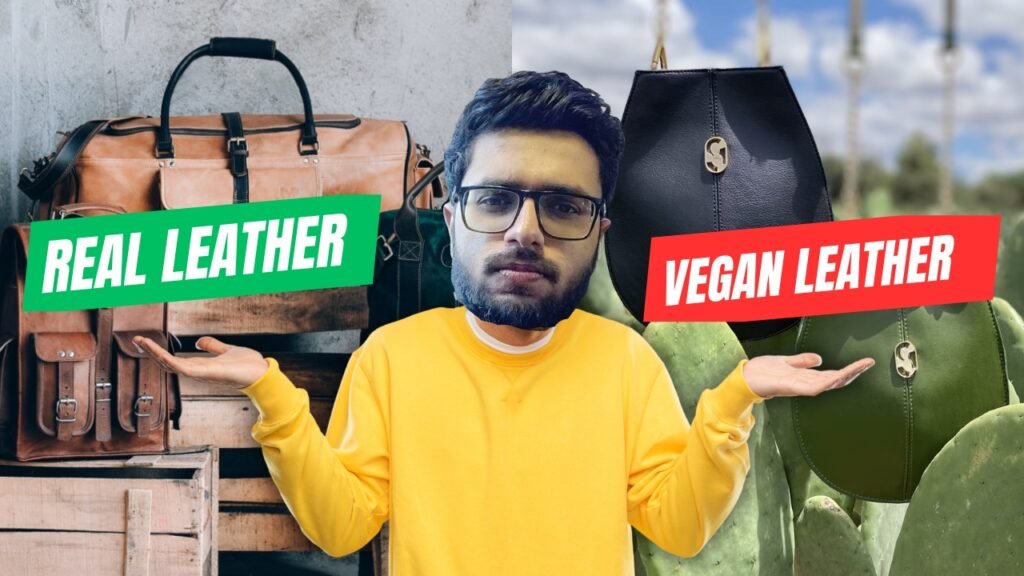
When faced with the decision between Vegan Leather and Real Leather, consider the following factors to make an informed choice:
Factors to Consider:
- Personal Values
Evaluate your ethical stance regarding animal welfare against your desire for durability and longevity in your leather products.
- Intended Use
Assess the purpose of the item—whether it’s for fashion, furniture, or accessories—to determine which material aligns better with your needs.
- Budget Constraints
Take into account your budget limitations and weigh them against the quality and longevity of the material you choose.
Use Cases and Examples:
Consider these scenarios to understand when each material might be more suitable:
- Vegan Leather:
- Fashion items where the latest trends matter more than long-term durability.
- Situations where ethical considerations outweigh concerns about material longevity.
- Real Leather:
- High-end fashion pieces where durability, feel and classic aesthetics are priority.
- Accessories like belts and shoes where longevity and resilience are essential and where you want to use leather
Conclusion
As the debate between vegan leather and real leather continues, it’s clear that both industries are evolving to meet the changing demands of consumers and the need for more sustainable practices.
While vegan leather has gained popularity as a cruelty-free and eco-friendly alternative, it’s essential to understand that it is fundamentally different from real leather in terms of composition, durability, and performance.
One of the key issues that has arisen is the misuse of the term “leather” by global brands. Many products labeled as “leather” are actually not leather at all, they are made from synthetic materials as mentioned above in detail, which can mislead consumers into expecting the same level of quality and longevity as real leather.
This practice has led to disappointment and dissatisfaction among consumers who are unaware of the differences between vegan leather and real leather.
In simple terms,
“A tanned animal hide or skin is called leather”
Definition of Leather
To address this issue, EU has recently introduced greenwashing laws to prevent brands from making misleading claims about the sustainability and composition of their products. However, the confusion surrounding the term “leather” persists, with many consumers believing that animals are killed solely for their hides.
In reality, leather is a by-product of the meat industry, and animals are primarily slaughtered for their meat. Organizations like PETA have been accused of misrepresenting this fact to further their agenda against the leather industry.
You can read about greenwashing here – https://isitleather.com/blog/truth-or-greenwashing-investigating-eco-friendly-
According to a scientist from the CSIR-Central Leather Research Institute, the hype surrounding vegan leather is likely to be short-lived. He predicts that within the next two to three years, the discussion around vegan leather will have largely subsided, as consumers come to understand its limitations and the superiority of real leather.
In conclusion, while vegan leather may have its place as a sustainable alternative for certain applications, it is not a direct replacement for real leather. The unique properties and durability of real leather make it a superior choice for many applications, particularly in terms of long-term value and performance.
As consumers become more informed about the differences between these materials and what goes into making such materials, it is likely that the demand for real leather will continue to grow, despite the efforts of some organizations to promote vegan alternatives.
So when it comes to choosing between leather and vegan alternatives, always go for products made from genuine real leather, by doing so, we not only support sustainable practices but also embrace a material that tells a story of craftsmanship, tradition, and the journey it has gone through to get into the shape of a product it is today.
I hope this article was informative. It took us a lot of time to research, fact-check, and write this article. Please add a comment down below—it would really motivate us. If you have any further queries, feel free to leave a comment or write to us via the contact page, and we will make sure to get back to you as soon as possible. take care and have a nice day ahead.








